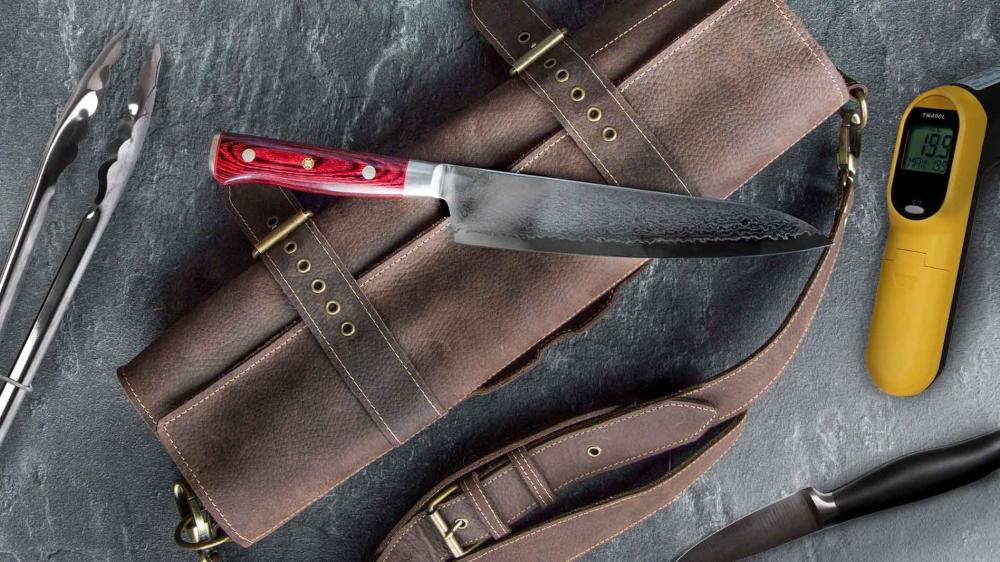Introduction
Whether you are a professional chef or a home cook, having the right tools in your kitchen is essential. A chef set is one of the most crucial collections you can invest in. It includes a variety of knives and tools designed to make food preparation easier, faster, and more efficient. In this comprehensive guide, we will delve into the components of a Chef set, what to look for when purchasing one, and how to maintain your tools to ensure they last for years.

Components of a Chef Set
A chef set typically includes several key pieces, each designed for specific tasks. Understanding these components will help you make an informed decision when purchasing your set.
Chef's Knife
The chef's knife is the centerpiece of any chef set. Usually ranging from 8 to 10 inches in length, this versatile knife is perfect for chopping, slicing, dicing, and mincing. Its broad, curved blade allows for a rocking motion, making it ideal for tasks that require precision and control.
Paring Knife
A paring knife is a small, 3 to 4-inch knife used for more delicate tasks. Peeling, trimming, and intricate slicing are some of its main uses. Despite its small size, a paring knife is incredibly handy and a must-have in any chef set.
Bread Knife
A bread knife features a serrated edge, making it perfect for slicing through bread without crushing it. Its long, 8 to 10-inch blade can easily cut through crusty loaves, cakes, and even tomatoes, providing clean and precise cuts.
Utility Knife
A utility knife is a mid-sized knife, usually around 6 inches in length. It bridges the gap between the chef's knife and the paring knife, making it suitable for a variety of tasks, from slicing meat to cutting sandwiches.
Boning Knife
A boning knife has a narrow, flexible blade designed to remove bones from meat and fish. Its sharp tip and curved edge allow for precise cuts, ensuring minimal waste and maximum yield.
Carving Knife
A carving knife is used for slicing large cuts of meat, such as roasts, turkeys, and hams. Its long, thin blade ensures smooth, even slices, making your presentation as impressive as your cooking.
Knife Sharpener
A good chef set also includes a knife sharpener, whether it's a honing steel or a more advanced sharpening tool. Keeping your knives sharp is essential for safety and efficiency in the kitchen. Chef set
What to Look for When Buying a Chef Set
Choosing the right chef set can be overwhelming with so many options available. Here are some key factors to consider:
Quality of the Steel
The quality of the steel used in the knives is crucial. High-carbon stainless steel is a popular choice because it combines the benefits of both carbon steel and stainless steel. It is durable, resistant to rust, and holds a sharp edge for longer periods.
Handle Comfort and Material
The handle of a knife should be comfortable to hold and provide a secure grip. Common materials include wood, plastic, and composite. Each has its pros and cons, so choose one that feels right in your hand and suits your aesthetic preferences.
Balance and Weight
A well-balanced knife feels comfortable in your hand and allows for precise control. The weight of the knife is also important; some chefs prefer heavier knives for their cutting power, while others opt for lighter knives for their maneuverability.
Full Tang Construction
Full tang construction means that the blade extends through the handle, providing extra strength and durability. This design is generally more robust and balanced, making it a preferred choice among professionals.
Number of Pieces
Consider how many pieces you actually need in your chef set. While larger sets offer more variety, they can also take up more space and be more expensive. A basic set with a chef's knife, paring knife, and bread knife might be sufficient for most home cooks.
Maintenance Tips for Your Chef Set
Proper maintenance of your chef set will ensure its longevity and performance. Here are some tips to keep your knives in top condition:
Regular Sharpening
Regularly sharpen your knives using a honing steel or a sharpening tool. A sharp knife is not only more effective but also safer to use, as it requires less force to cut through food.
Hand Washing
Always hand wash your knives with mild soap and water, and dry them immediately. Avoid putting them in the dishwasher, as the high heat and harsh detergents can damage the blades and handles.
Proper Storage
Store your knives in a knife block, magnetic strip, or protective sheath to prevent them from becoming dull or damaged. Avoid tossing them in a drawer, where they can knock against other utensils and lose their edge.
Safe Cutting Surfaces
Use cutting boards made of wood, bamboo, or plastic. Hard surfaces like glass or stone can dull your knives quickly and even cause chips in the blades.
Conclusion
Investing in a quality chef set is a game-changer for anyone who spends time in the kitchen. By understanding the components of a chef set, what to look for when purchasing one, and how to maintain your tools, you can ensure that your cooking experience is both enjoyable and efficient. Whether you're slicing vegetables for a salad, carving a roast for a family dinner, or filleting a fish, the right Chef set will make all the difference. Happy cooking!